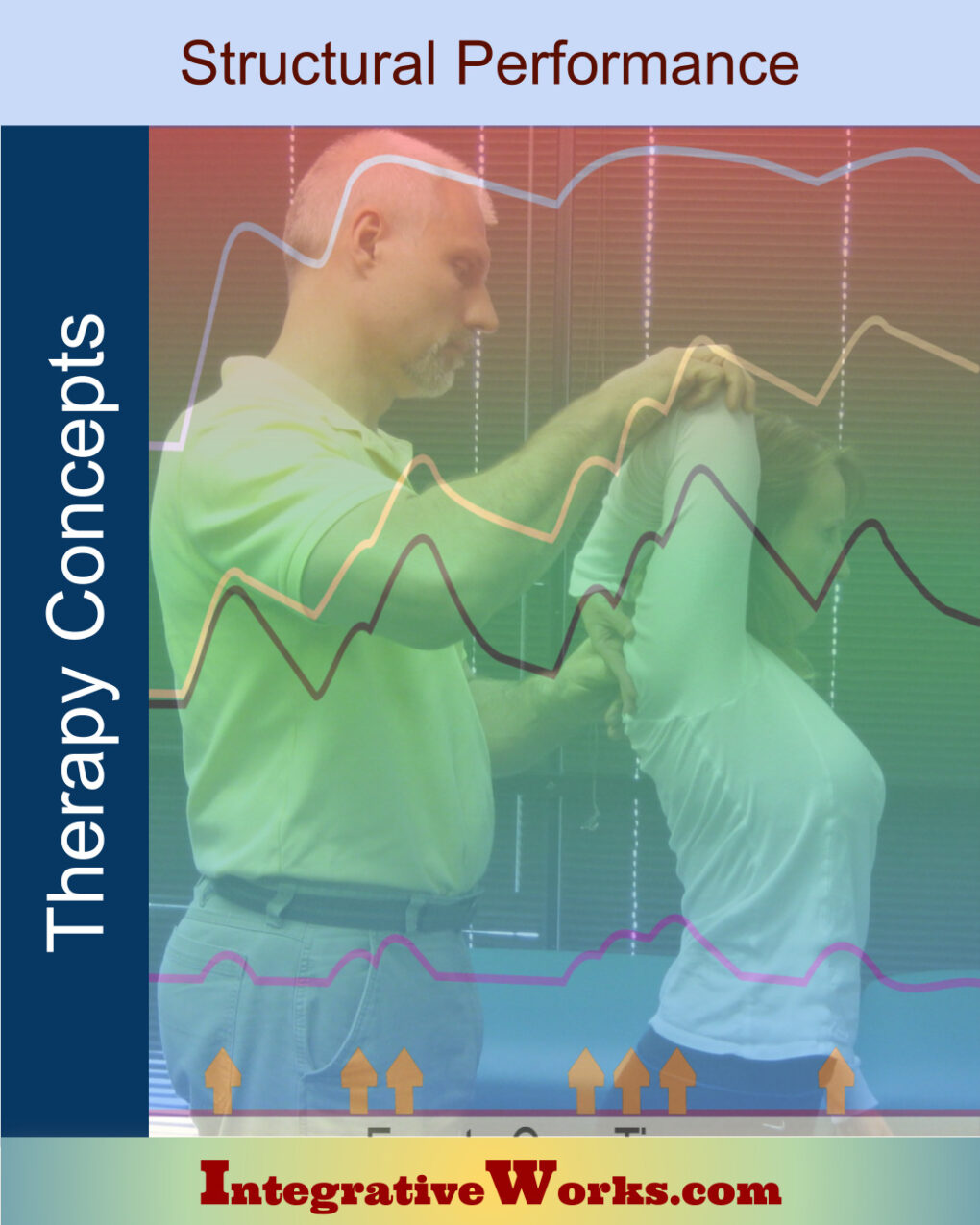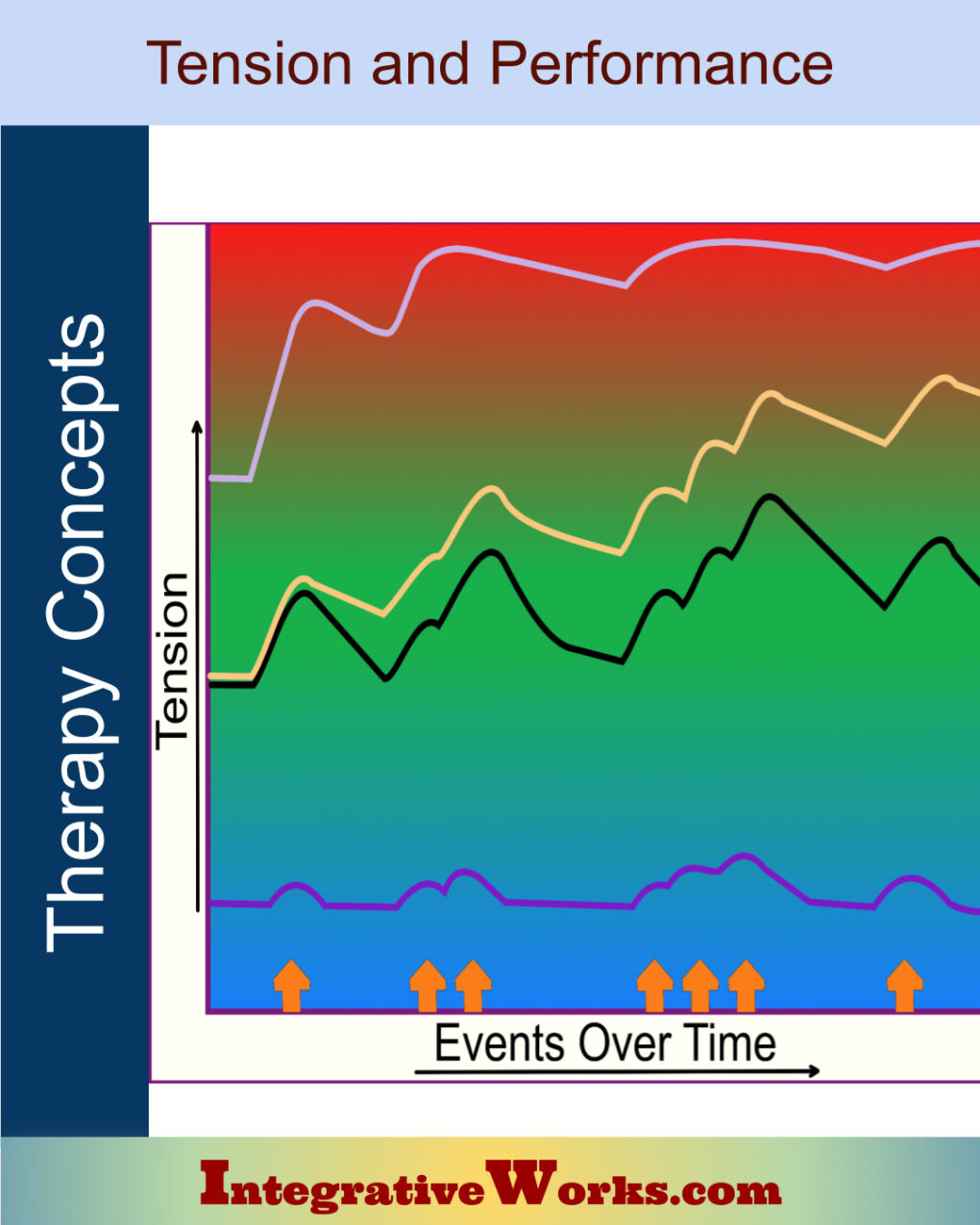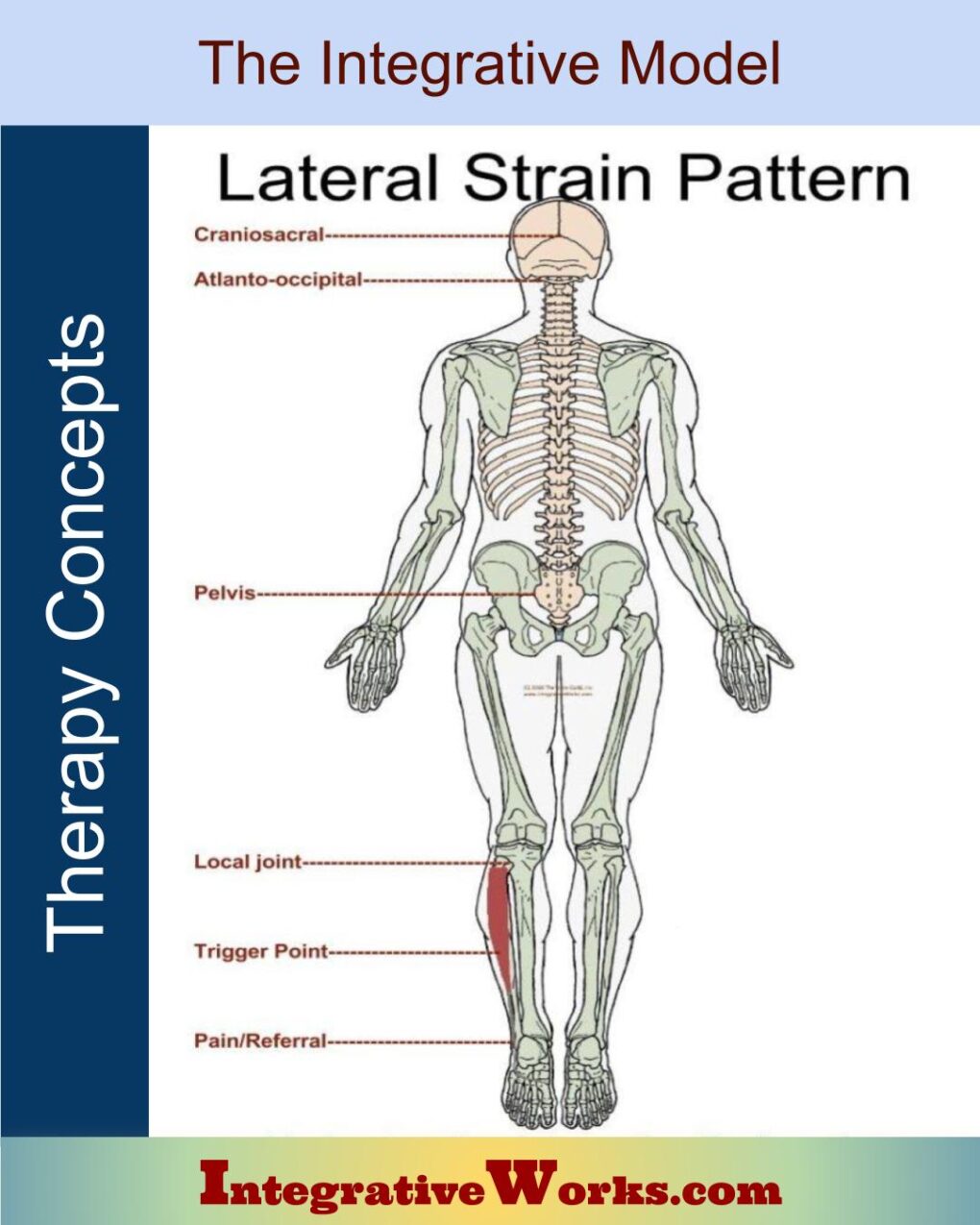Introduction
Integrative Bodywork addresses the Holistic Model from a structural perspective. This text is focused on Structural Performance. Further, this post describes how bodywork is used to regulate the individual so they can, well, perform. Although we could use bodywork to improve entertainers’ activities, this post speaks to the performance of more common activities. Structural Performance includes everyday activities like sitting or getting out of bed, climbing stairs, or hiking without pain. Additionally, this applies to demanding activities like cycling or hiking.
Performance
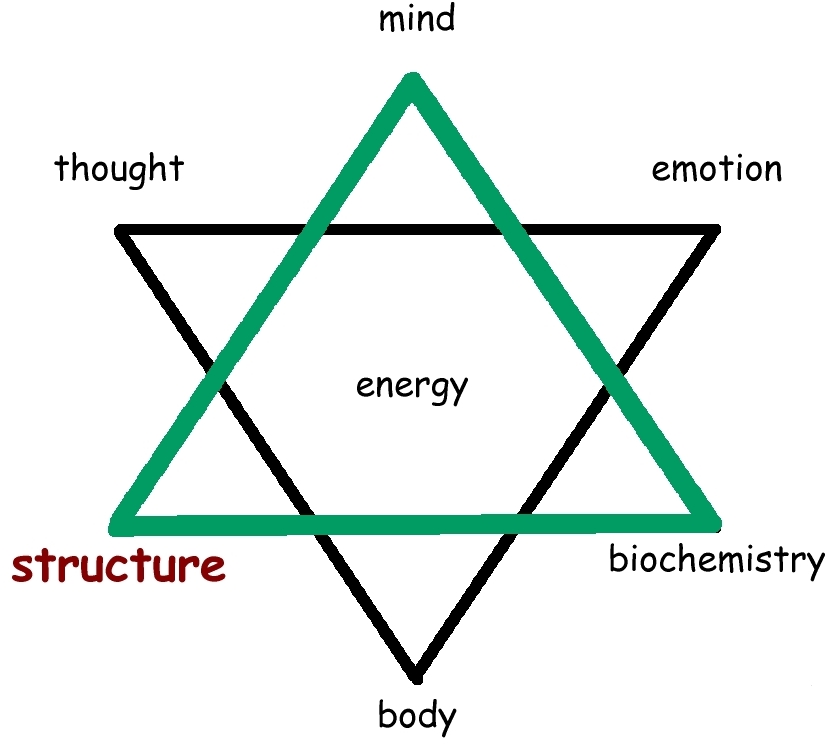
The Holistic Model
From a Structural Approach
In the Holistic Model, we recognize that many approaches can impact a particular problem. For example, TMJ (jaw) pain may be helped by counseling (mind) to stop clenching. On the other hand, low back pain can be helped with pain creams (biochemical).
Structural practitioners
work with the structure to
improve Holistic performance.
However, we need to consider our influence on the factors of the mind and biochemistry. Also, we need to consider when a structural problem is better served by working with the mind or biochemistry.
Holistic Performance
First, make sure you are familiar with the concepts of Holistic Performance. The concepts of Structural Performance are predicated on Holistic Performance.
Structural Performance
The word “structure” has a few different meanings in the field of bodywork. In this case, we are talking about structural performance instead of biochemical or mental performance. Later we will talk about structural bodywork, as opposed to functional bodywork.
Additionally, Structural Performance refers to the ability of structures to respond and recover to perform. As I illustrated in this post on Tension and Performance, it is hard to perform well when the tension is too much or too little. Typically, we begin to falter as changes in tension take us out of the Window of Performance.
Improving Performance
Clients seek therapy
to modulate responses and
expand the Window of Performance
Patients typically seek pain relief or wellness care. Pain relief improves performance by quieting responses that drive tension out of the Window of Performance. Typically, wellness care expands the Window of Performance. At times, pain relief turns into wellness care. In other circumstances, wellness care addresses pain management.
Modulation vs Expansion
Modulating responses and expanding the Window of performance are overlapping concepts. Nevertheless, let’s explore their differences.
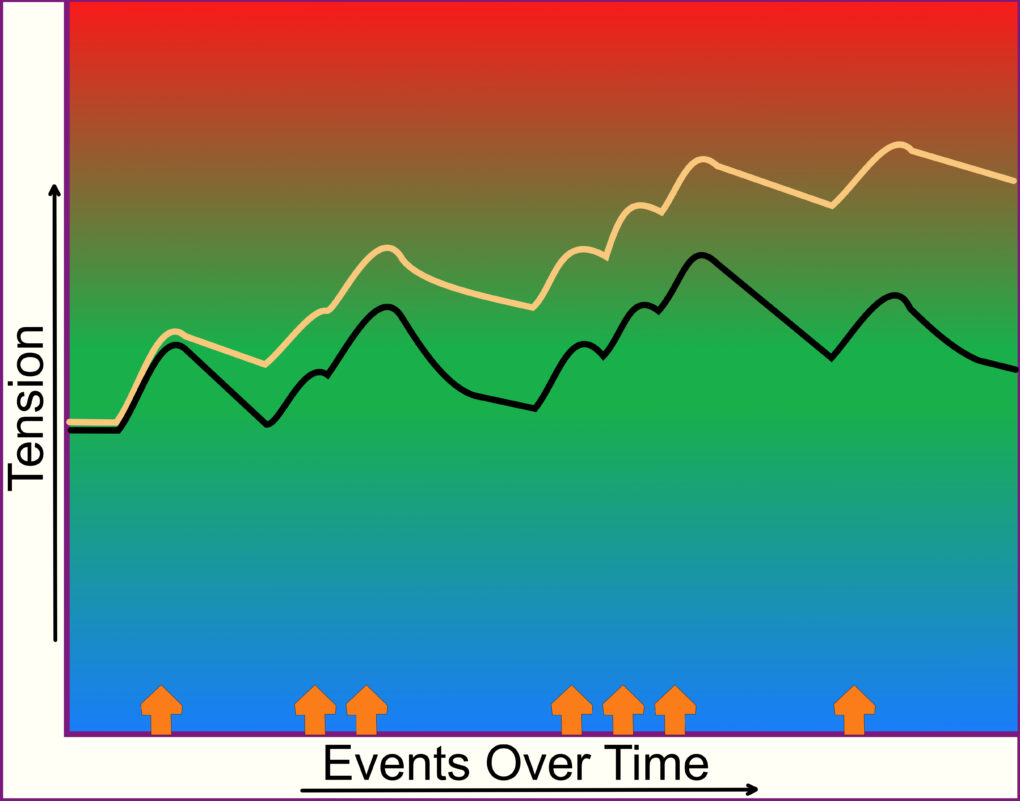
Modulating Responses
Modulating tension moves us back toward a regulated state. It can happen by reducing responses or improving recovery. Improving modulation helps us transition to the next task and prepare ourselves for more stimuli. This includes quieting physiological reactions like pain. In other words, reducing pain responses makes the body less tentative, which improves performance.
Notably, we can modulate responses by adjusting the activity. For instance, installing ramps instead of stairs can decrease the intensity and complexity. This improves structural Performance by removing moments of sharp pain that drive the participant out of the Window of Performance. Additionally, those peaks of intensity create additional tension (pain and soreness) that continues throughout the day. This narrows the Window of Performance for the rest of the day. Ice, pain cream, or stretching could aid in modulating lingering tension.
Functional bodywork and Modulation
In bodywork, functional techniques tend to organize the system to modulate tension. In other words, functional bodywork removes transient problems so that the body works well within its current structural integrity. This is not a hard and fast rule. At times, functional bodywork can relieve long-term pain.
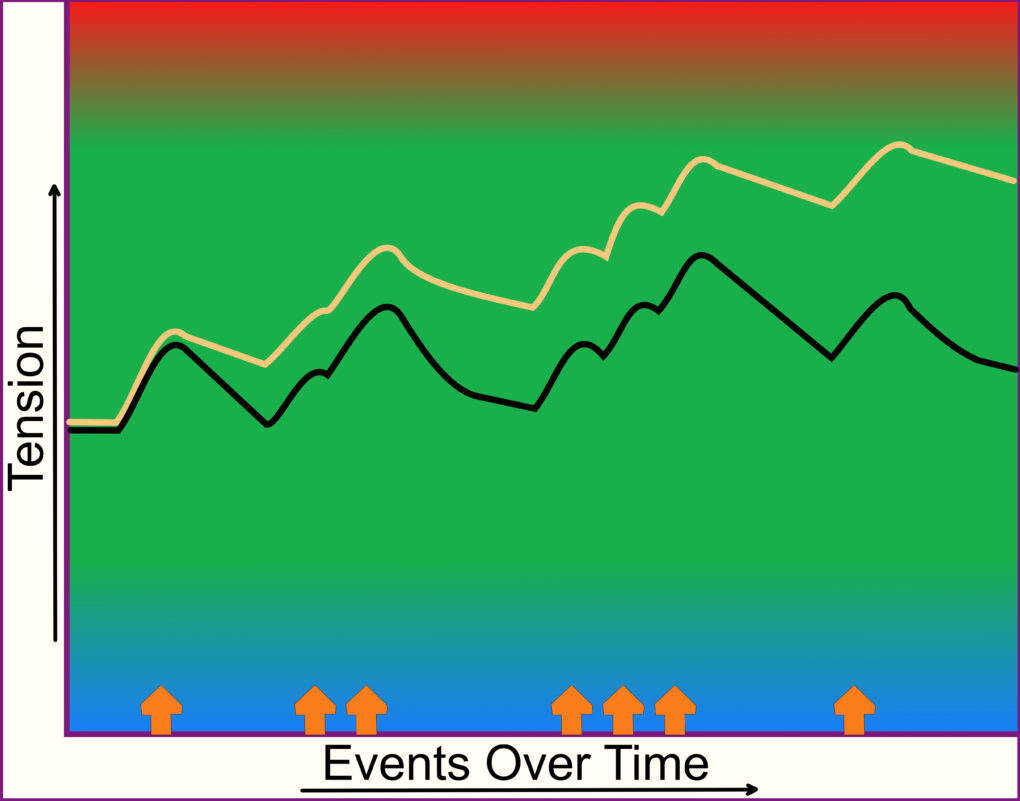
Expanding the Window of Performance
Expanding theWindow of Performance broadens the range of tension in which we can perform. Instead of improving modulation, it broadens the range of performance without faltering.
A cyclist may seek therapy to improve performance by improving circulation, which enhances recovery while cycling. This allows athletes to expand their performance without becoming dysregulated and losing power. Additionally, changes in the fascial structure expand the range of motion, giving them a wider Window of Performance.
Structural Bodywork and Expansion
In bodywork, structural techniques tend to broaden the Window of Performance. For example, changing fascial tension reduces the effort and recovery needed to perform. Furthermore, transient problems are less likely to develop or linger when bodies have body has fewer structural restrictions.
The Diminishing Window of Performance
The Social Media Perspective
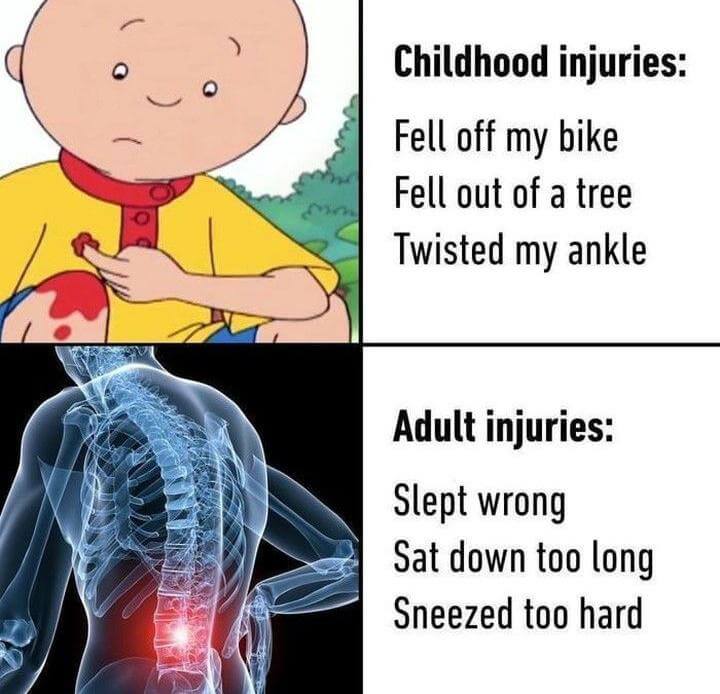
There’s a typical hook around memes of the aging adult. It speaks to how easy it is to get injured as you age. But, truthfully, those younger rascals are more resilient. And it’s not just on the end of high tension. It also works out that those little scamps can stay awake too.
Now, I don’t mean to ruin the fun of a good joke by overanalyzing it, but…
The Tension Model Perspective
Look at the difference between these two illustrations. If you’re puzzled, go back at look at this post about Tension and Performance., especially the sections on The Window of Performance and Regulating Tension.
The yellow line doesn’t falter in performance with a wider window.

– Fell off Bike
– Fell out of Tree
– Twisted Ankle

– Slept Wrong
– Sat Down Too Long
– Sneezed Too Hard
Mostly, it’s not age that makes simpler challenges more impacting. Instead, the body accumulates structural infractions until it has a narrow Window of Performance. In other words, our ability diminishes, so the same stimuli cause our performance to falter. Sure, aging does some of that. For example, biochemically, we produce less NAD, and structurally, the epigenome deteriorates. Those are contributions of aging toward diminishing performance.
However, there are other contributors. As structural therapists, we look for the structural infractions that reduce Structural Performance. As Holistic practitioners, we acknowledge other contributors like nutrition and stress.
Maintaining a Broad Window of Performance
Structural maintainence slows the process of a narrowing window. Additionally, structural problems created by stress and injury impact performance. Conversely, bodywork dampens those factors that diminish the Structural Performance .
I had a watershed moment during a massage exam. They asked for the definition of massage. To get the question correctly, you had to state that massage is about the distortion of mechanoreceptors to change the behavior of the nervous system.
Integrative Bodywork and
Maintaining the Window of Performance
In functional bodywork, integrative techniques tend to modulate responses to increase Structural Performance. Moreso, they modulate the governing elements that perpetuate the ancillary, symptom-producing components.
Additionally, Integrative Bodywork renders a body that is better at self-correcting with structural bodywork. Structural bodywork on the ancillary components improves their ability to self-correct symptomatic concerns. Applying structural, integrative techniques to governing components improves self-correction across larger patterns.
To understand more about that apporach, look at the short video in this other post on the Integrative Model.
Support Integrative Works to
stay independent
and produce great content.
You can subscribe to our community on Patreon. You will get links to free content and access to exclusive content not seen on this site. In addition, we will be posting anatomy illustrations, treatment notes, and sections from our manuals not found on this site. Thank you so much for being so supportive.
Cranio Cradle Cup
This mug has classic, colorful illustrations of the craniosacral system and vault hold #3. It makes a great gift and conversation piece.
Tony Preston has a practice in Atlanta, Georgia, where he sees clients. He has written materials and instructed classes since the mid-90s. This includes anatomy, trigger points, cranial, and neuromuscular.
Question? Comment? Typo?
integrativeworks@gmail.com
Follow us on Instagram

*This site is undergoing significant changes. We are reformatting and expanding the posts to make them easier to read. The result will also be more accessible and include more patterns with better self-care. Meanwhile, there may be formatting, content presentation, and readability inconsistencies. Until we get older posts updated, please excuse our mess.

